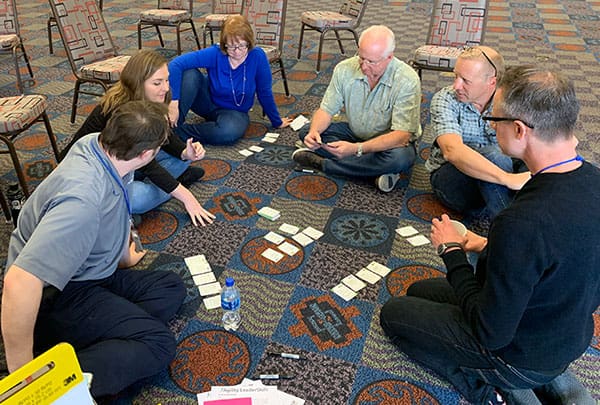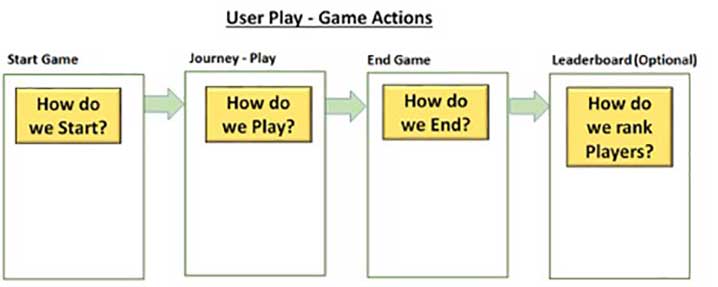KnolShare Agility LeaderShift Learning Cards
A Fun and Interactive Way for Teams to Learn Together

Welcome to the Agility LeaderShift card game that help leaders learn more about servant leadership, lean thinking, and agile practices in a fun way!
One Way to Play:
- Select a knowledge bucket (card) from the deck of cards.
- Each player has 90 seconds to respond to the question or scenario.
It’s that simple!
Agility LeaderShift is a fun game that enables you to learn lean and agile principles in a group or individually.
This game is for you if you are interested in becoming a better leader in your family, community, and/or business. Or, you may want to play a game that causes you to reflect upon how you get along with other people at work, at school, and at home.
The game can also be used as a training tool to introduce the concepts of lean thinking and agility to professionals who are interested in transforming their leadership character.
Game Guides
Go -> Play -> Innovate Game
Go - Play - Innovate Instructions
Goal:
The goal of Go-Play-Innovate is to engage a group to collaborate and innovate to create a game that can be played by others. The rules are simple - you make the rules. Games have three key stages that include 1) start game, 2) journey - play, and 3) end game. Optionally, a fourth stage can be used to determine ranking of the winners that can be displayed on a Leaderboard.
Game Supplies:
- AgilityLeaderShift Learning Cards (AgilityLeaderShift.com)
- Sharpies
- Sticky notes
- Fours (4) large pieces of paper
- Table and Wall space
- Other things you will discover

How to Play:
- Determine how you will organize to collaborate and innovate
- Discuss how to use the AgilityLeaderShift learning Cards in the game
- Determine how to start the game - write on sticky and place on “Start Game”
- Determine the journey steps to play the game - write on sticky and place on “Journey - Play”
- Determine how to end the game - write on sticky and place on “End Game”
- Determine how to rank winning players - write on sticky and place on “Leaderboard”
- Model the game to identify areas of improvements by playing the game
- Hold a retrospective for continual learning and discover improvements
Retrospective Activity
Hold a retrospective for continual learning and discover ways to improve. A few resources to learn about retrospectives include 1) Tasty Cup Cakes and 2) Innovation Games.
One of my favorite retrospective game is Sailboat or Speedboat. This provide a nice visual and engages the mind to think about improvements using the metaphors of “wind in my sail” and “weighing me down”.
Ice Breaker Game
- Standing or sitting at a table, place the deck of cards face down
- Start clockwise or counter-clockwise and have a person select a card
- Read the question or scenario on the card out loud.
- Set a timer for 90 seconds. Each player has 90 seconds to respond to the question or scenario.
- Provide your answer to the question, scenario, or description
GameStorming 3-12-3 Brainstorm Game
Object of Play
This format for brainstorming compresses the essentials of an ideation session into one short format. The numbers 3-12-3 refer to the amount of time in minutes given to each of three activities: 3 minutes for generating a pool of observations, 12 for combining those observations into rough concepts, and 3 again for presenting the concepts back to a group.Essential to this format is strict time keeping. The “ticking clock” forces spontaneous, quick-fire decisions and doesn’t allow for overthinking. With this in mind, a group that is typically heavily measured in its thought process will benefit the most from this exercise but will also be the hardest to engage. Given its short duration (30 minutes total for 10 participants), 3-12-3 Brainstorming can be used as an energizer before diving into a longer exercise or as a standalone, zero-prep activity. It works equally well in generating new ideas as improvements to existing ones.Number of Players
This is a fast exercise that gets slower as more participants are added. With up to 10 participants working as partners, the speed of the exercise makes it an energy builder. Working beyond 10 may require creating groups of three instead of pairs to keep from getting slowed down.
Duration of Play: 21–30 minutes, depending on number of participants
How to Play
You will need a topic on which to brainstorm ideas, boiled down to two words. This could be an existing problem, such as “energy efficiency,” or it could be focused on creating something new, such as “tomorrow’s television.” Although the two words could be presented as a full challenge question, such as “How
will tomorrow’s television work?” it is best to avoid doing this right away. By focusing on two words that signify the topic, you will aim to evoke thinking about its defining aspects first, before moving into new concepts or proposing solutions.
To set up the game, distribute a stack of index cards and markers to all the participants. Everyone should have a fair number of cards available. The game should begin immediately after the rules have been explained.
- 3 Minutes: Generate a Pool of Aspects. For the first three minutes of the exercise, participants are asked to think about the characteristics of the topic at hand and to write down as many of them as they can on separate index cards. It may accelerate the group’s process to think in terms of “nouns and verbs” that come to mind when thinking about the subject, or to free-associate. As in all brainstorming, no filtering should be put on this phase, in which the goal is a large pool of aspects in a small window of three minutes.
- 12 Minutes: Develop Concepts. At this point the group is divided into pairs. Each team draws three cards randomly from the pool. With these as thought starters, the teams now have 12 minutes to develop a concept to present back to the larger group. If the two topic words are sufficient to explain the challenge, the clock starts and the teams begin. If there is any doubt, reveal a more fleshed-out version of the topic’s focus, such as “How will we become more energy-efficient next quarter?” In developing concepts to present, teams may create rough sketches, prototypes, or other media—the key is in preparing for a short (three-minute maximum) presentation of their concept back to the group.
- 3 Minutes: Make Presentations. When presenting to the larger group, teams may reveal the cards that they drew and how the cards influenced their thinking. Again, tight time keeping is critical here—every team should have a maximum of three minutes to present their concept. After every team has presented, the entire group may reflect on what was uncovered.
- Strategy
Speed is key. Many traditional brainstorming techniques can be slowed down or fouled entirely when time is not of the essence, despite the best intentions of participants. Additionally, speed helps prove the value of what can be accomplished in short bursts—often the important aspects of good ideas can be captured very quickly and do not require laborious discussion before first coming to light.After presenting concepts back to the group, teams may do a number of things. They may dig deeper on an individual concept or try to integrate the ideas into each other. They may vote or rank the concepts to decide on which to spend more time developing. Often, concepts coming out of this exercise are more memorable to the participants, who are bonded in the time-driven stress of creating together.The 3-12-3 Brainstorm game is credited to James Macanufo.



